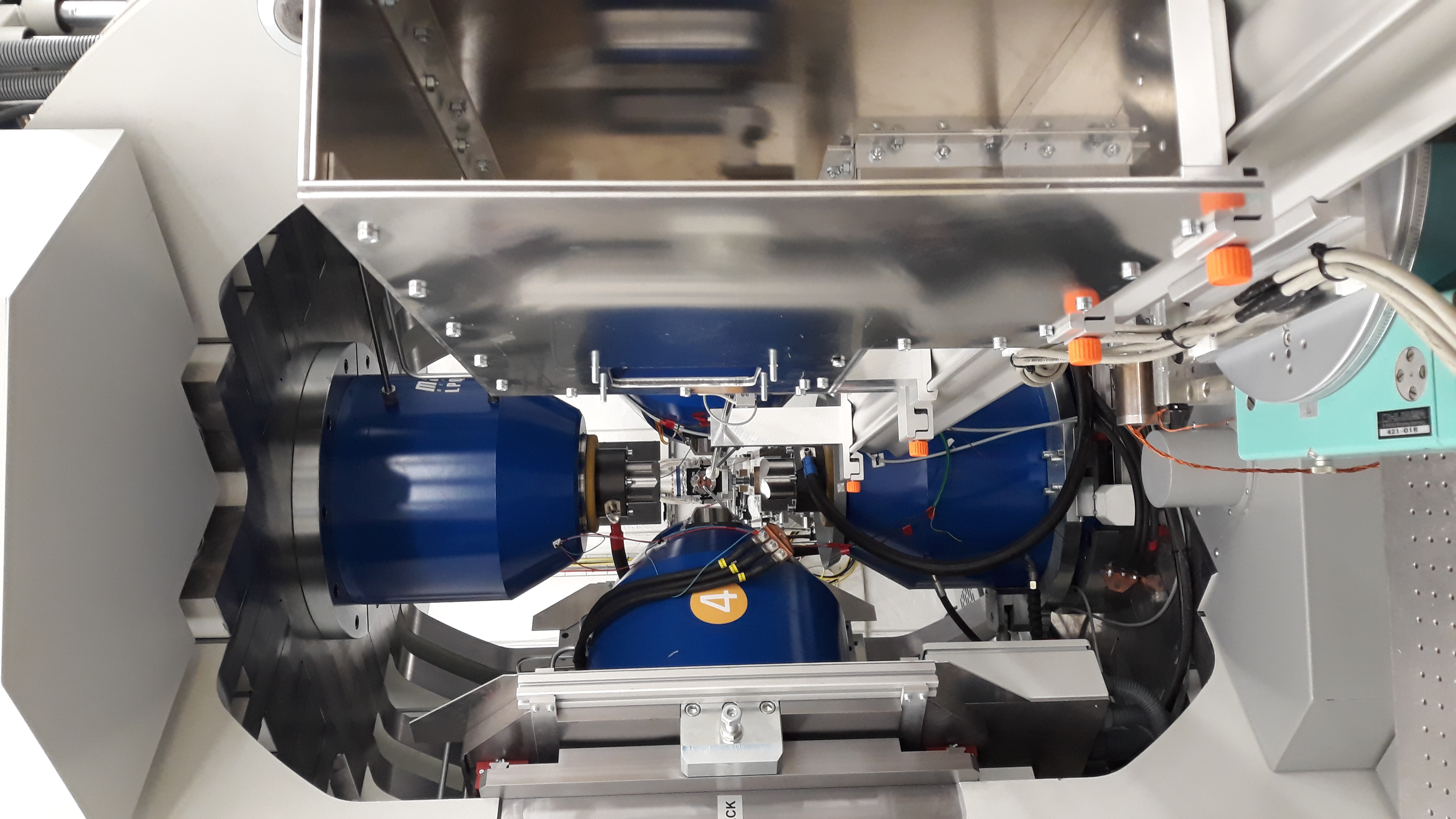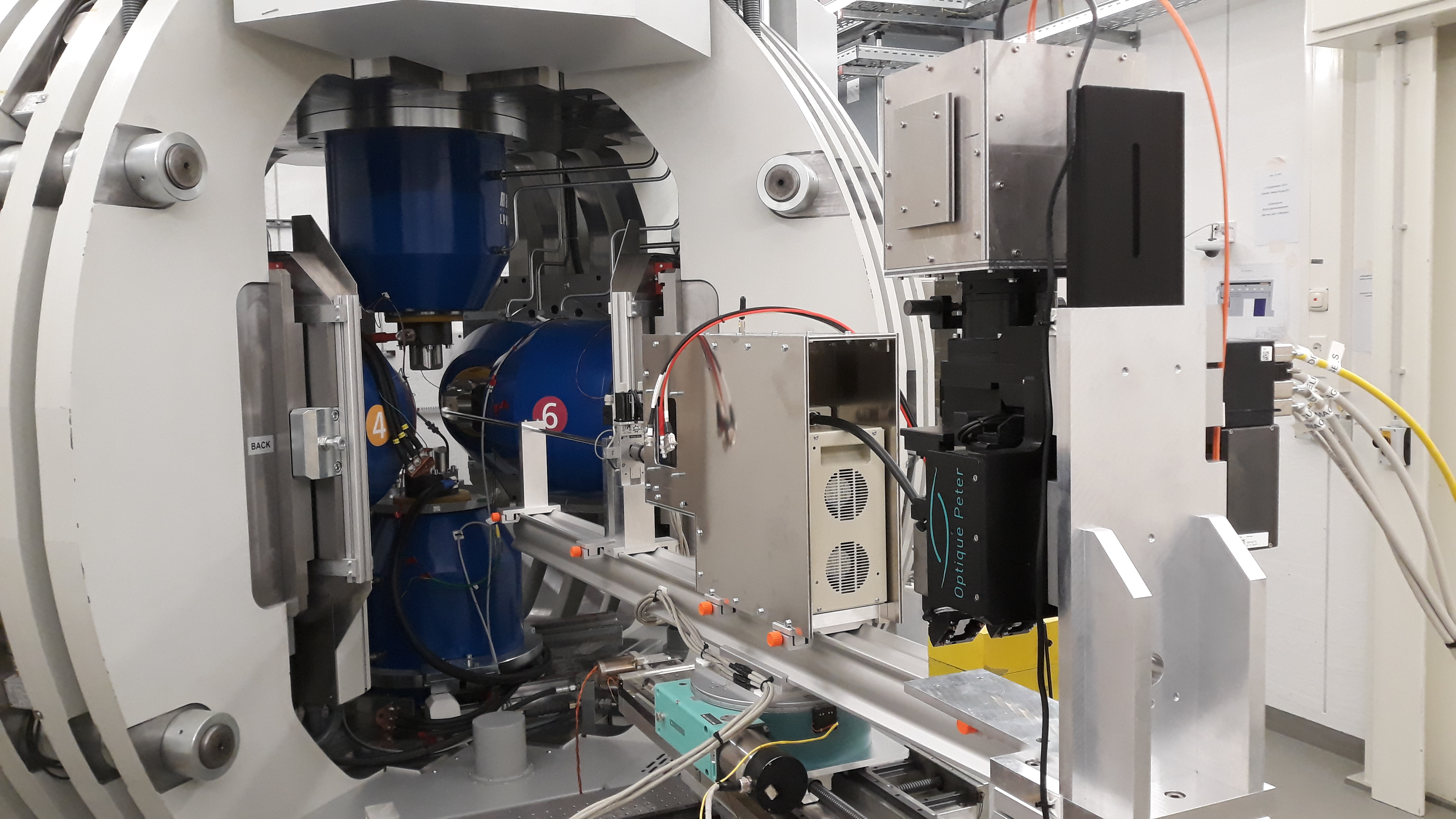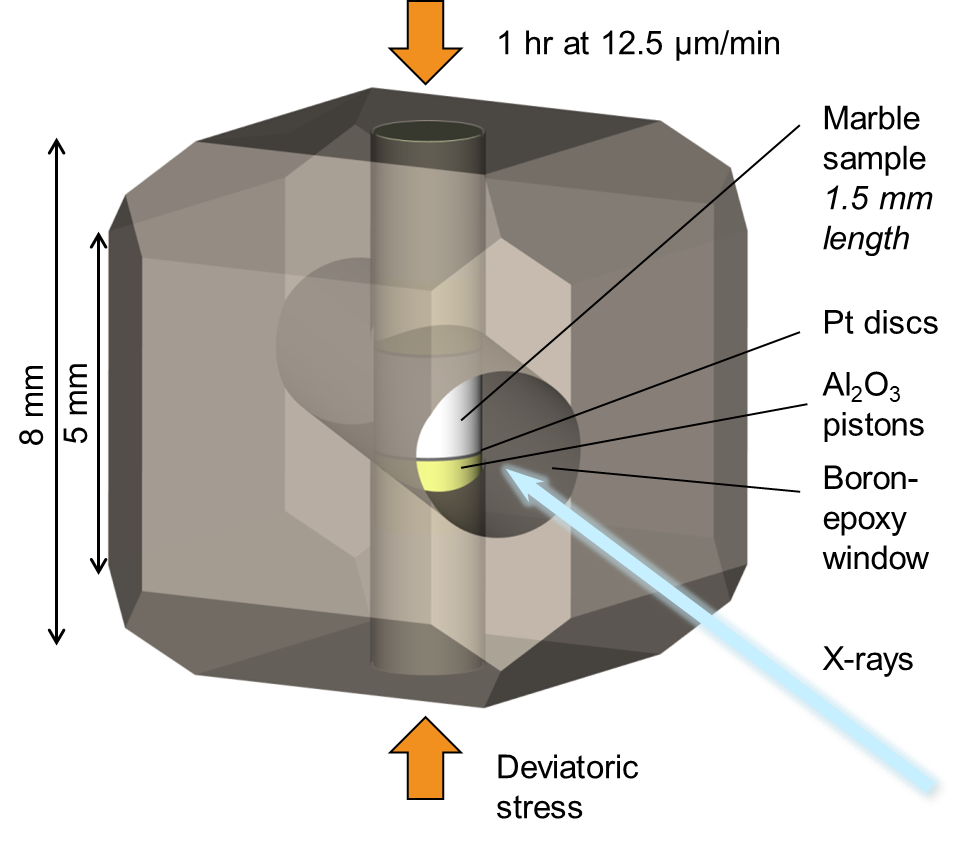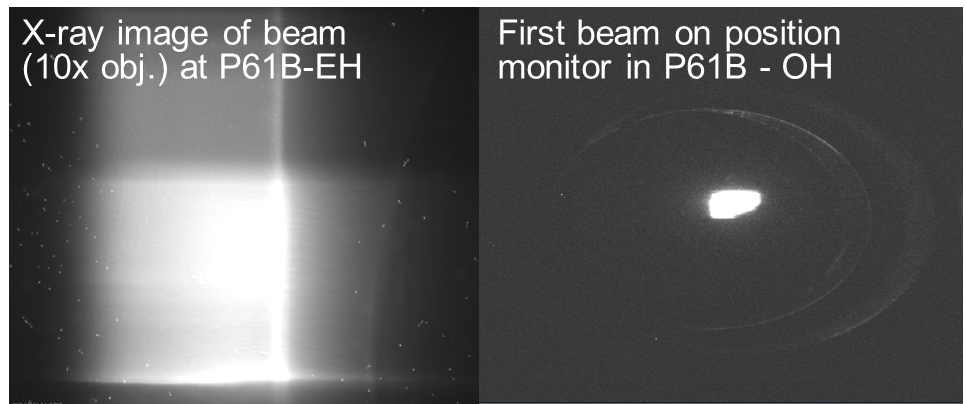URL: https://petra3-extension.desy.de/e84814/e85529/e260846/@@siteview
Breadcrumb Navigation
P61B Large Volume Press - Extreme Conditions (LVP-EC)
↦ Apply for standalone LVP use at P61B. Applications can be submitted anytime.
Announcement
This website is deprecated! Please visit the up to date beamline website HERE .
Experiments at extreme conditions using white-beam synchrotron radiation
The Large Volume Press (LVP) extreme conditions beamline will utilize synchrotron X-ray radiation with an energy range of 30 - 200 keV. The beamline is designed for the combination of ED-XRD, WD-XRD (with monochromatic light) and Radiography Imaging techniques. The structure and properties of samples can be measured in situ using these techniques under extreme conditions of high pressures and temperatures. Various combinations and additional set ups are envisaged for the future.
 The LVP that is installed at P61B is the world’s first 6-rams-LVP operated at a synchrotron facility. This type of instrument offers deformation capability, precise control of the anvil positions and high efficiency of pressure generation.
Experiments at extreme conditions of high pressures and temperatures are possible in various modes using a combination of 6 first-stage anvils and 6 or 8 second-stage anvils (6-6 and 6-8 compression geometries, respectively). Using the 6-8 mode with tungsten carbide second stage anvils, pressures up to 30 GPa can be generated at the expense of a smaller anvil gap, up to 10 degrees for diffracted X-rays. Alternatively, the 6-6 mode offers a wider anvil gap, particularly up to 27 degrees in the vertical plane for diffracted X-rays, but the maximum sample pressure is limited to about 15 GPa. Also, controlled deformation of samples is only possible in 6-6 mode.
The LVP that is installed at P61B is the world’s first 6-rams-LVP operated at a synchrotron facility. This type of instrument offers deformation capability, precise control of the anvil positions and high efficiency of pressure generation.
Experiments at extreme conditions of high pressures and temperatures are possible in various modes using a combination of 6 first-stage anvils and 6 or 8 second-stage anvils (6-6 and 6-8 compression geometries, respectively). Using the 6-8 mode with tungsten carbide second stage anvils, pressures up to 30 GPa can be generated at the expense of a smaller anvil gap, up to 10 degrees for diffracted X-rays. Alternatively, the 6-6 mode offers a wider anvil gap, particularly up to 27 degrees in the vertical plane for diffracted X-rays, but the maximum sample pressure is limited to about 15 GPa. Also, controlled deformation of samples is only possible in 6-6 mode.
On this website you can find information about booking time on the LVP - at the moment without X-rays. Users are encouraged to prepare experiments as much as possible in advance and bring anvils with common truncation edge length (TEL). Notwithstanding, we can fully accommodate you in our sample preparation laboratory if you have no resources except for the sample you wish to synthesise at high P,T conditions.
Other information about the beamline can be found in the menus on the left. If you have any questions, please do not hesitate to contact the beamline manager, Dr. Robert Farla.
News
- 23-09-2019. Addition of AC heating capability for the 6-ram LVP, courtesy of the Bayerisches Geoinstitut.
- 19-09-2019. Addition of a Ge-SSD (Germanium - solid state detector) on the temporary table. To be commissioned in week 39. (A 2nd Ge-SSD will not be added until May 2020 with the delivery of the detector pos. system from Kohzu)

- 23-08-2019. First deformation experiment using X-ray radiography.
Sample assembly:
Deformation movie (gif) - Decompression movie (gif)
- 01-08-2019. First beam!

- 23-05-2019. The 6-ram LVP was upgraded this week with enhanced press modes:
1) Static compression
2) Deformation on the vertical rams
3) Uniaxial compression without the side rams.
For mode 2, multi-step deformation profiles for 2 independent rams moving at different or equal (and opposite) rates can now be constructed. The press is now part of the interlock system. Compression above 50 bar cannot continue while the hutch door is open (for safety reasons). - 25-02-2019. Video! Go here to watch a run through the Paul P. Ewald hall of PETRA III, showing the construction status of P61 and P62.
- 15-02-2019. NEW! Leica M80 stereo microscope with HD (10 Mpix) camera now available. ● 6-ram LVP and press software to get major upgrade - 3 modes of compression, and more. ● Standard assemblies to be provided to users, published here. ● X-ray microscope system to be tested at P21.2 this February. ● Temporary detector positioning system design ready, construction starting soon. ● Twin Ge-SSD high count rate detector system arriving May 22, 2019. ● Complete detector positioning system eta. Nov 2019. ● First beam eta. now Summer 2019.
- 21-11-2018. Beamline construction update: Call for tender for cooling water, compressed air and air conditioning ends 13-12-2018. If successful, work is anticipated to begin at the end of January 2019 or early February 2019.
- 19-11-2018. The call for tender for the detector positioning system is advertised here.
- 15-11-2018. Regrettably, due to delays with a call for tender for the detector-collimator-slit positioning system, this system will not be ready until end of 2019. This will delay first high-P in situ experiments using X-rays. However, the detector and camera systems will be commissioned from early Summer 2019 using a temporary positioning solution. First beam is still expected for May 2019.
- 01-10-2018. The official 3rd LVP workshop was hosted on 01 and 02 October 2018. A good number of some 40 participants attended. For details please visit the archived workshop website here.
- 16-08-2018. First light in the newly completed Front End of P61! Have a look !
- 14-08-2018. Register now for the noon-to-noon workshop on focused on in situ extreme conditions research at the P61B LVP beamline using synchrotron X-rays. Visit the website here!
- 10-08-2018. P61B has a benchtop X-ray diffractometer with strip detector available for use. If interested, please check the webpage in the menu on the left.
- 14-05-2018. The LVP is reconnected and in use again. Please contact me with a project if you are interested. Bear in mind some calibration work is still ongoing.
- 25-01-2018. DESY User Meeting Xtreme Conditions session presentation: Status of P61B
- 18-01-2018. Some calculations of the beamline were done. See here.
- 20-12-2017. Important notice! The LVP is disconnected until the concrete hutches of P61 have been built. (Completed by end of March 2018).
- 04-11-2017. The LVP beamline P61B was showcased on DESY day (Nacht des Wissens).
- 16-10-2017. A 2 day Xtreme Conditions Workshop for PETRA IV took place.
- 01-06-2017. The Large Volume Press (LVP) is fully operational and users can apply for standalone use (see menu).
- 01-06-2017. The frontend and beamline are under construction and no X-rays are available. Estimated time of arrival of X-rays is projected for late 2018.


